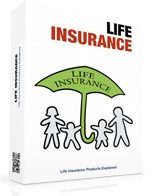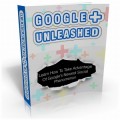
 License Type: Personal Use
License Type: Personal Use  File Type: ZIP
File Type: ZIP
 SKU: 62222
SKU: 62222  Shipping: Online Download
Shipping: Online Download
Sample Content Preview
Introduction
We buy car insurance on the possibility of getting into an accident. We buy homeowner’s insurance on the possibility of fire or flood. But these are not certainties. You might never be in an accident or see your house catch fire.
But the one area where most of us fall short is life insurance. Yet death is the one thing that is inevitable, albeit hopefully many years in the future. Now is the time to plan for it.
While most Americans agree that life insurance is a good idea, the majority of them never get around to buying it. Why? In short, because they’re intimidated, if not confused outright by the entire process. There are several options available, and while this may seem daunting at first glance, the options are available to provide you with the correct insurance for your needs.
In this book, we’ll take a look at the various options, discuss your needs, and go over some general tips and tricks for making your life insurance purchase. Choosing a policy is an opportunity to try your hand at predicting the future. You’re not only going to need to keep in mind your current state – which includes your physical health, your financial health, and your family’s requirements. But you’re also going to have to make a guess at what these factors might look like in 5 years or 10 or even further into the future from there. And while life insurance can be a great idea for some, it might not suit everyone. Types of policies vary as much as the people that need them.
Thankfully you don’t have to go it alone. When in doubt you can always ask your agent. They know their way around policies and riders and will help you choose the course best suited to you and your needs. But be sure to do your research first. Having as much information as possible will help you to know the right questions to ask, thereby giving you that extra advantage as you set off to discover what insurance is right for you.
Types of Life Insurance
When you first set out to explore the idea of buying life insurance, it’s very easy to become confused. There seems to be unlimited options and finding the policy that’s best for you feels something like a scavenger hunt, especially where there are so many options that can be tacked on for added benefit to the survivors.
Your best defence is to understand what you’re getting into. That starts with understanding the terminology of the various types of policies. Taken to the bare minimum, there really are only three kinds of life insurance. These are term, whole, and variable. Out of these come others, with a few variations tacked on for special needs.
Let’s take a look at ten of these. See what works for you and discover how you can leverage these policies to suit your needs.
Term life
Term life insurance is exactly as it sounds. It’s purchased for a specified length of time or term. Term life is the most basic of life insurance policies that pays out upon death. There is no cash value build up as with some other policy types. This isn’t a savings or investment account. It pays a benefit upon death, and little more.
Because it has no cash accumulation, term life is almost always a much less expensive choice compared to other life insurance policies. Monthly premiums are low, and typically, the amount of coverage doesn’t change. Term life insurance is typically sold in five-year increments. It’s tailored to a younger group who are seen to be generally in good health. The thing to keep in mind is that once you reach the end of the term, you will need to re-qualify for a new policy, and the rates will reflect your current age and health at that time.
Assuming you are a healthy, young purchaser, term life insurance is meant to cover basic needs at the time of payout, largely covering final expenses and filling in gaps while survivors have a chance to adapt to a new way of life and a change in income.
However, term life has other, hidden benefits. Sometimes a no examination policy is available, and term life insurance can be purchased for “high risk” cases and for people in poor health. Life insurance for smokers, for example, is usually at a higher premium and often harder to find.
Also, if you have a 30-year mortgage on the house, perhaps a 30-year term policy is the best way for you to consider. The benefit would expire at the same time as the loan. In the meantime, your family is covered for the balance of the mortgage payment should you pass away. There are other types of term life insurance as well.
• Increasing and Decreasing Term Life Insurance
In the example above, a term life insurance policy is purchased to provide coverage for a mortgage in the event of someone’s death. Paying a mortgage means paying on the principal, which lowers the amount borrowed. In essence, what you owe for a home at the time of purchase will not be what you owe in five years or ten. If the reason you’re wanting term life insurance is to cover the mortgage payments for your heirs so that they don’t have to worry about moving should something happen to you, then your payout amount can be reduced as the amount needed to pay the loan decreases. Although the monthly premiums will not change, the decreasing benefit might involve a smaller outlay of cash at the beginning of the policy. A decreasing term life insurance will provide the coverage you need when you need it.
Increasing term life insurance, as the name suggests, will increase the payout amount over time. For example, if a young parent has a child, the financial needs of that child will increase over time. A policy for that will support that child in the case of a parent’s death will need to increase over time to cover the child’s needs. In this case, perhaps a 20-year term life insurance policy might be the way to proceed.
• Renewable Term
Term life insurance is set for a certain amount of time, thus the name “term.” When that time runs out, the insured must create a new policy, then qualify for the new policy, and pay whatever initial costs are necessary to create a brand-new policy.
With a renewable term life insurance, the insured is able to get a new policy at the end of the term life. Typically, this is done without re-qualifying and does not require the initial life insurance start-up fees.
Monthly premiums will increase due to the insured’s advancing age and possible health complications, but a guaranteed renewal means that you cannot be refused a policy.
• Convertible Term Life Insurance
A convertible term life insurance will allow you to change from a term life insurance to a permanent, or whole, life insurance policy at a later date. This brings the benefit of lower payments up front for term life but allows you to change over when your needs change. As long as payments have been kept current, there’s no further need for physical examinations or new quotes. It’s much like a renewable term life insurance policy, allowing the insured to move to a permanent insurance type.
• Modified Term Life Insurance
Much like it sounds, a modified term life insurance policy allows for flexibility. Decreasing death benefits, increasing premium amounts over time, this type of term insurance can be altered to suit your needs currently and in the future.
• Re-entry term life insurance
When purchasing term life, insurance carriers charge less because they have screened the applicant and found him/her to be in good health. What began to happen is that over the length of the term, say five years, people who remained in good health dropped their policies and those who had failing health held on to theirs. In the 1970s insurance companies offset the trend by offering Reentry term life insurance. If the insured continues to demonstrate insurability and general good health, renewal premiums based on lower mortality charges are comparable to newly issued term policies.







